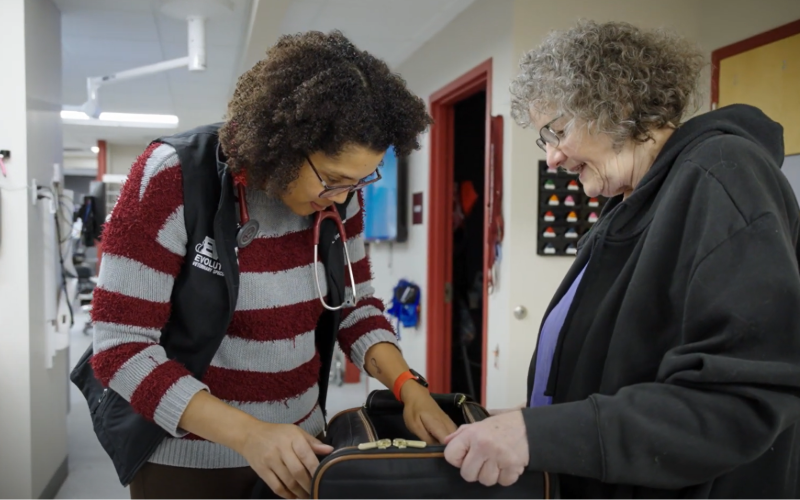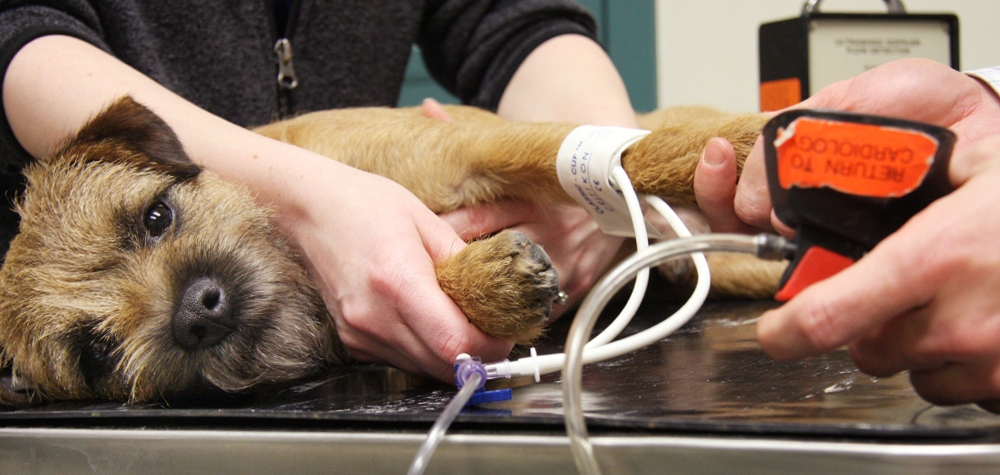The Function of Ultrasound and CT Scan in Modern Vet Practices: Insights From Experienced Professionals
In modern vet practices, ultrasound and CT scans considerably enhance diagnostic abilities. These imaging techniques supply crucial understandings right into animal health, guiding treatment choices. Experienced professionals acknowledge the one-of-a-kind advantages of each technique. Ultrasound uses real-time assessments, while CT checks deliver complex anatomical information. Understanding their applications and roles increases important inquiries regarding their effect on client end results and the future of veterinary diagnostics. What understandings can be acquired from their incorporated usage?
Understanding Ultrasound in Veterinary Medication
Ultrasound is an important analysis tool in veterinary medication, offering a non-invasive technique to envision internal frameworks. This imaging strategy uses high-frequency acoustic waves to create real-time images of body organs and cells, enabling veterinarians to analyze conditions without medical intervention. Typical applications consist of evaluating the heart, liver, kidneys, and reproductive organs, in addition to monitoring pregnancies.The procedure is fairly fast and can be done in various settings, making it an accessible alternative for vets. Unlike radiography, ultrasound supplies comprehensive details regarding soft cells and blood circulation, which is essential for precise diagnoses.Veterinary specialists rely upon ultrasound to find irregularities such as tumors, cysts, and fluid accumulation. Its capacity to direct biopsies and other procedures better boosts its energy in professional method. By offering a risk-free and reliable way to examine interior composition, ultrasound has actually become a keystone of modern vet diagnostics.
The Advantages of CT Checks for Pet Diagnostics
CT scans offer considerable benefits in vet diagnostics by giving enhanced precision in identifying interior conditions (CT Scans For Animals). As a non-invasive imaging technique, they ensure the security and convenience of animals throughout assessments. In enhancement, CT checks facilitate a thorough assessment of internal structures, enabling more efficient therapy preparation
Boosted Analysis Precision
Advancements in imaging modern technology have greatly enhanced diagnostic precision in veterinary medicine, specifically through using CT scans. These scans give detailed cross-sectional photos of a pet's internal structures, enabling veterinarians to recognize abnormalities with precision. The high resolution and three-dimensional abilities of CT imaging promote the detection of problems such as growths, cracks, and interior bleeding that may be missed out on with standard imaging techniques. Furthermore, CT scans can help in pre-surgical preparation by providing a comprehensive sight of physiological partnerships. This level of detail not only improves the accuracy of medical diagnoses but likewise help in tailoring effective therapy plans. Subsequently, the assimilation of CT modern technology into vet methods is transforming the landscape of pet health care, boosting end results for individuals.
Non-Invasive Imaging Method
The intro of non-invasive imaging techniques has actually transformed animal diagnostics, with CT checks becoming a prominent device in vet methods. These scans provide high-resolution, cross-sectional photos of a pet's inner frameworks, enabling vets to assess intricate problems without the need for intrusive procedures. The advantages of CT scans include their capability to spot lumps, fractures, and inner bleeding with remarkable accuracy. Furthermore, they assist in the assessment of soft cells and body organs, boosting diagnostic abilities. The rate of CT scanning enables fast decision-making, which is essential in emergency circumstances. By decreasing tension and pain for the animal, CT scans add to an extra humane strategy to diagnostics, ultimately enhancing therapy outcomes and advancing vet treatment.
Comprehensive Internal Assessment
A complete internal assessment is necessary for accurate diagnosis and reliable treatment in vet medication. CT checks offer significant advantages in this respect, giving detailed cross-sectional pictures of an animal's interior frameworks. This innovative imaging modality boosts visualization of complicated anatomical regions, making it possible for vets to recognize irregularities such as lumps, fractures, and interior blood loss with better accuracy. On top of that, CT checks facilitate the assessment of conditions that may be challenging to diagnose with traditional approaches. The rate and precision of CT imaging additionally contribute to timely interventions, enhancing individual end results. As vet techniques significantly include CT innovation, the advantages of substantial inner analyses end up being apparent, reinforcing the value of this device in modern veterinary diagnostics.
Contrasting Ultrasound and CT Imaging Techniques
While both ultrasound and CT imaging serve necessary functions in veterinary diagnostics, each strategy uses unique benefits and limitations that can influence professional decision-making. Ultrasound is especially valued for its real-time imaging abilities, enabling vets to observe vibrant physical procedures. This method is non-invasive, portable, and does not entail ionizing radiation, making it a more secure choice for both animals and medical professionals. Nonetheless, ultrasound may have limitations in envisioning specific physiological structures or deep tissues.Conversely, CT imaging gives in-depth cross-sectional views of the body, enabling exact localization of irregularities. It excels in evaluating facility body organs and frameworks, especially in the thorax and abdomen. CT scans require sedation or anesthetic in numerous instances and involve direct exposure to ionizing radiation. Eventually, the option between ultrasound and CT depends on the specific medical situation, the location of interest, and the urgency of the analysis needs.
Instance Researches: Successful Diagnoses With Imaging
Study highlight the substantial improvements in see this site analysis precision achieved with sophisticated imaging modern technologies like ultrasound and CT scans in veterinary techniques. These advancements not just boost the discovery of various conditions but likewise help with prompt and effective therapy strategies. Examining particular situations can highlight the transformative effect of these imaging methods on veterinary medicine.
Diagnostic Accuracy Improvements

Imaging Technology Advancements
As veterinary imaging innovation continues to advance, its effect on diagnostic capacities comes to be increasingly noticeable. Current situation researches highlight the successful application of innovative ultrasound and CT scan techniques in determining intricate problems. A veterinary clinic used high-resolution CT scans to identify an unusual type of lung cancer in a pet, which conventional imaging had missed. An ultrasound evaluation exposed a stomach mass in a pet cat, prompting prompt medical intervention and a positive end result. These advancements not only boost diagnostic accuracy however likewise make it possible for vets to create targeted treatment plans. By leveraging innovative imaging innovations, vet specialists are substantially boosting client treatment, bring about extra reliable management of various health and wellness problems in pets.
The Role of Imaging in Emergency Situation Veterinary Treatment
Imaging plays an important duty in emergency veterinary treatment, giving veterinarians with essential details needed to make quick, informed decisions. In immediate circumstances, strategies like ultrasound and CT scans allow professionals to rapidly analyze an animal's interior frameworks, recognizing essential conditions such as interior blood loss, cracks, or organ problems. These imaging techniques Find Out More permit for real-time evaluations, helping with timely interventions that can be life-saving. As an example, ultrasound is vital for reviewing soft tissue injuries and problems like liquid buildup, while CT checks offer in-depth pictures of intricate physiological frameworks, essential for diagnosing trauma cases. The rate and accuracy of these imaging techniques enhance the veterinarian's ability to develop effective treatment plans, guaranteeing the very best possible outcomes for their people. Subsequently, the assimilation of advanced imaging modern technologies into emergency vet methods is not just advantageous yet progressively needed, as it boosts diagnostic capacities and boosts general pet treatment during defining moments.
Training and Knowledge in Vet Imaging
Although advanced imaging strategies such as ultrasound and CT scans are crucial for reliable vet treatment, the successful execution of these modern technologies heavily depends upon the training and expertise of veterinary professionals. Skilled use imaging devices requires complete expertise of composition, pathology, and the principles underlying each method. Veterinary specialists need to go through specialized training to precisely analyze imaging outcomes, which is vital for diagnosing problems and planning treatment.Certifications and continuing education in veterinary imaging improve the skills of specialists, allowing them to stay updated with technical developments. Cooperation between vets and radiologists frequently results in enhanced analysis precision, as experts can provide understandings right into intricate situations. In enhancement, sensible experience in taking care of imaging devices fosters confidence in its application. Inevitably, the high quality of veterinary imaging solutions is directly correlated to the level of training and knowledge possessed by the professionals making use of these essential diagnostic devices.
Future Fads in Diagnostic Imaging for Animals
With the quick advancements in innovation, vet analysis imaging is poised for substantial evolution in the coming years. Emerging patterns indicate a change towards even more obtainable and mobile imaging techniques, such as portable ultrasound devices, which can boost area diagnostics. Additionally, the assimilation of expert system is anticipated to revolutionize photo analysis, enabling for quicker and extra exact interpretations of results.Moreover, advancements in 3D imaging methods and calculated tomography will give veterinarians with even more complete sights of pet composition, causing improved therapy plans. Virtual fact modern technology might additionally contribute in surgical planning and education and learning, offering vets a distinct perspective on complex cases.As telemedicine remains to grow, remote appointments helped with by analysis imaging will end up being extra common, allowing specialists to assist general professionals in real-time. Generally, these patterns are set to enhance the performance and efficiency of veterinary care, inevitably improving pet end results.
Often Asked Concerns
Just How Much Do Ultrasound and CT Checks Expense in Veterinary Clinics?
The expenses of ultrasound and CT scans in vet clinics usually range from $300 to $1,500, depending on aspects such as place, facility kind, and certain treatments needed for the pet's medical diagnosis and treatment.

Exist Any Dangers Associated With Ultrasound and CT Scans for Animals?
Ultrasound and CT scans generally posture marginal dangers to animals. Potential problems include sedation reactions and direct exposure to anesthetics. Veterinarians meticulously evaluate each instance to reduce any threats related to these diagnostic procedures
For How Long Do Ultrasound and CT Procedures Typically Take?
Ultrasound procedures typically take around thirty minutes to an hour, depending on the intricacy. CT scans, being more in-depth, typically call for half an hour to 90 mins, including preparation and healing time for the pet.
Can All Veterinarians Perform Ultrasounds and CT Scans?
Not all veterinarians can perform ultrasounds and CT scans. Specialized training and qualification are commonly required to guarantee competency in these sophisticated imaging strategies, which may limit their schedule to vets with extra credentials and resources.
What Sorts Of Animals Benefit A Lot Of From These Imaging Techniques?
Particular animal species, especially pets and pet cats, benefit considerably from ultrasound and CT scans. These imaging techniques improve analysis accuracy for conditions like tumors, internal injuries, and organ abnormalities, bring about better therapy end results and patient care. The high resolution and three-dimensional abilities of CT imaging facilitate the detection of conditions such as tumors, fractures, and internal bleeding that might be missed with traditional imaging methods. Case studies show the considerable improvements in analysis accuracy accomplished with sophisticated imaging modern technologies like ultrasound and CT scans in vet techniques. Improving diagnostic precision in veterinary techniques has actually been significantly helped by improvements in imaging innovations such as ultrasound and CT scans. Innovative imaging more information strategies such as ultrasound and CT scans are vital for reliable vet treatment, the successful execution of these modern technologies heavily depends on the training and competence of vet experts. Veterinary professionals should go through specific training to accurately analyze imaging results, which is important for identifying problems and planning treatment.Certifications and proceeding education in veterinary imaging improve the skills of practitioners, allowing them to stay updated with technological advancements.
Comments on “How a Cancer Veterinary Near Me Can Improve Your Pet’s Quality of Life}”